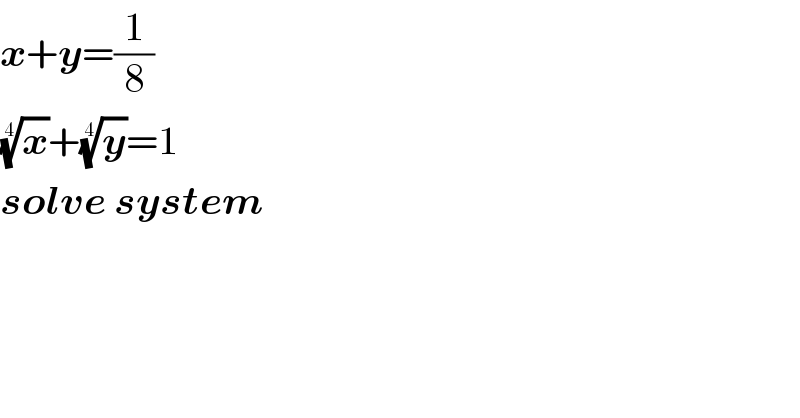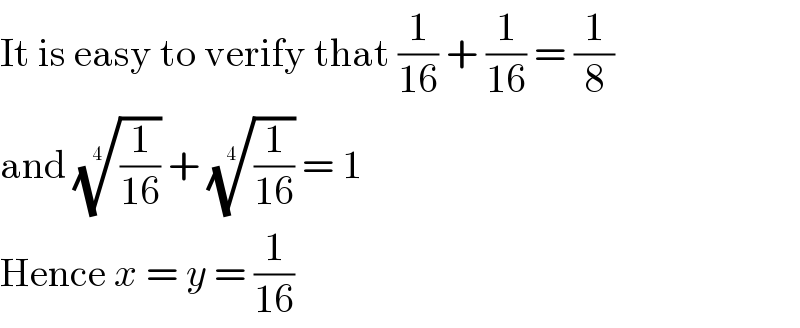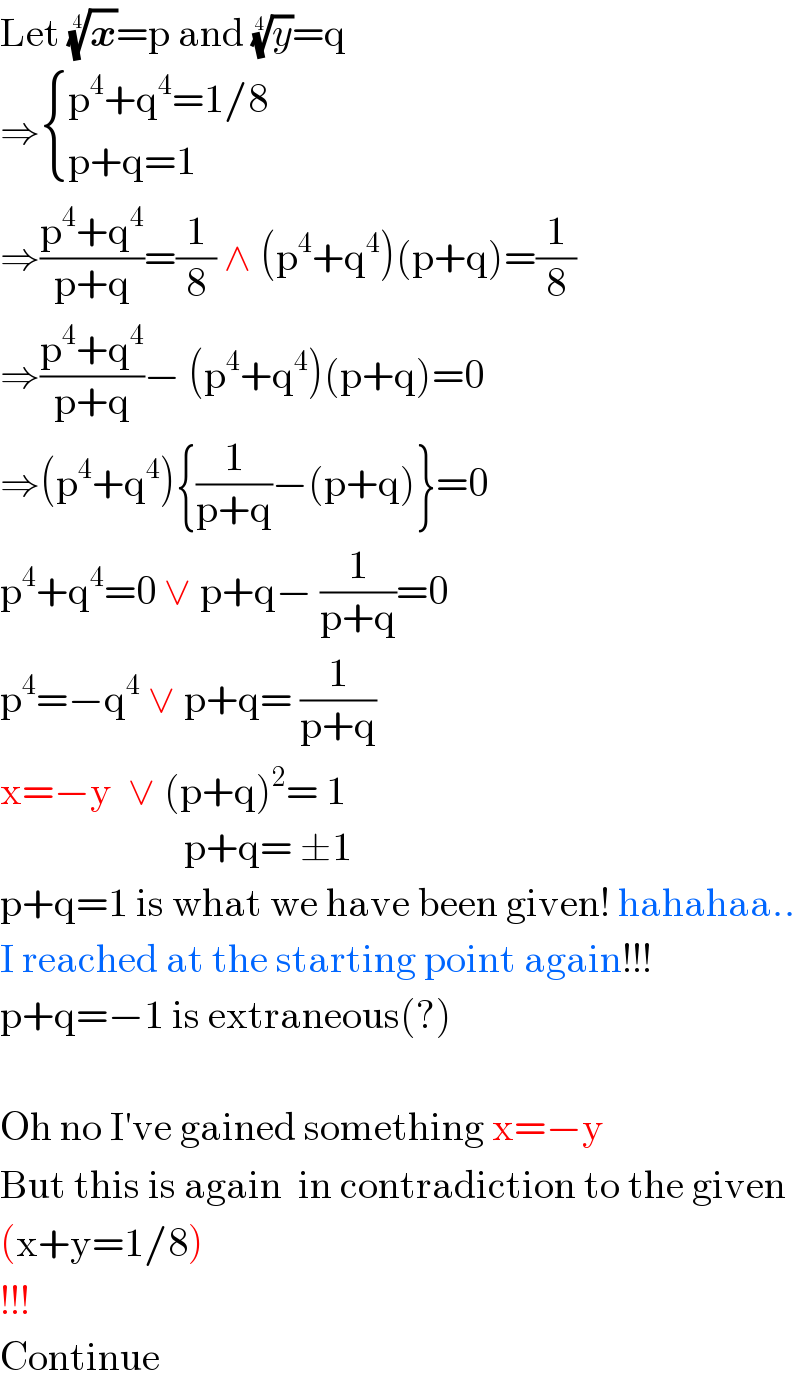
Question and Answers Forum
Question Number 14742 by Mr Chheang Chantria last updated on 04/Jun/17

Commented by Tinkutara last updated on 04/Jun/17

Commented by RasheedSoomro last updated on 04/Jun/17

Commented by prakash jain last updated on 04/Jun/17

